Multi-Ethnic Teams Complete Relief Missions in Northern and Western Karen State; Burma Army Fires Upon Villagers in Karen State
16 January 2014 Karen State, BurmaIn this report:
-
Run for Relief and GLC in Tha Dah Der Village
-
Burma Army Fires on team and villagers
-
Mission to Kler Lwe Htoo and Mu Traw Districts
-
Mission to Kler Lwe Htoo – Ler Doh
The morning mist still hung low over the valley as lines of children arrived from all directions for this year’s Good Life Club program and the 5th annual Tha Dah Der Village Run for Relief. The five years since the first run here have not been years of peace – the village was burned in 2010 – but they have been years in which the people here have stood together, rebuilt, and refused to surrender the life God has given them.
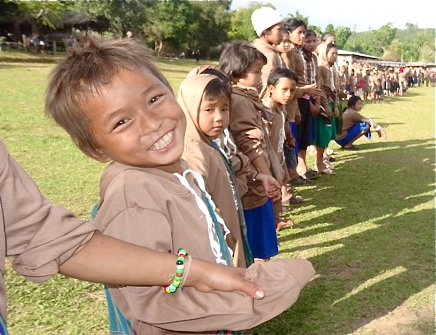
Some 450 children came to the Good Life Club program and learned from advanced and newly-graduated rangers – including rangers from Karen, Karenni, Shan, Kachin, Arakan, Lahu, Naga and Pa-Oh areas of Burma. The Rangers taught the older students about leadership and also a practical FBR skill such as reporting, medicine, navigation, or camera use. Everyone got a shirt and a small beaded bracelet that symbolized God’s salvation. There was much laughing and singing and playing – after so many years of coming here, the villagers are like family. The scene was one of joy, borne of peace – but it spoke more of the hearts of the people here than their circumstances.
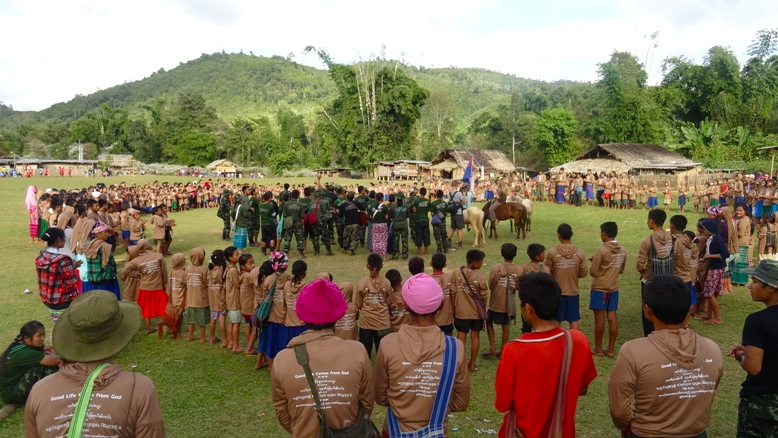
Just the day before this program, our teams did a reconnaissance of a nearby Burma Army camp and were shot at by soldiers in the camp. On the same day, we were given a list of 10 new Burma Army camps in the area that have been built up in the last two years. Additionally, we received reports of the Burma Army shelling fields a day’s walk away, fields the villagers were prepared to harvest and needed for their year’s food supply, and that will now go to waste while the people go hungry. We have told this story before but this year there is a difference: just four days after our little run for relief in Tha Dah Der Village, the Southeast Asian Games’ opening ceremonies took place in Naypyidaw, the capital of Burma. Hundreds of athletes, representing their nations, came to compete. The Karen families here who just lost their supply of rice because the local army commander decided to mortar their field do not share the joy of these games, nor the peace they represent.
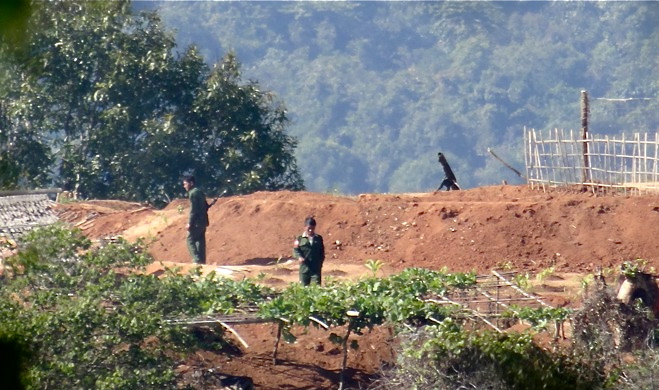
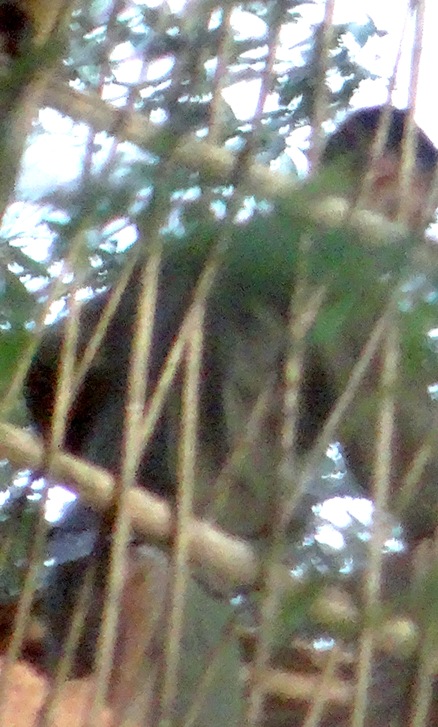
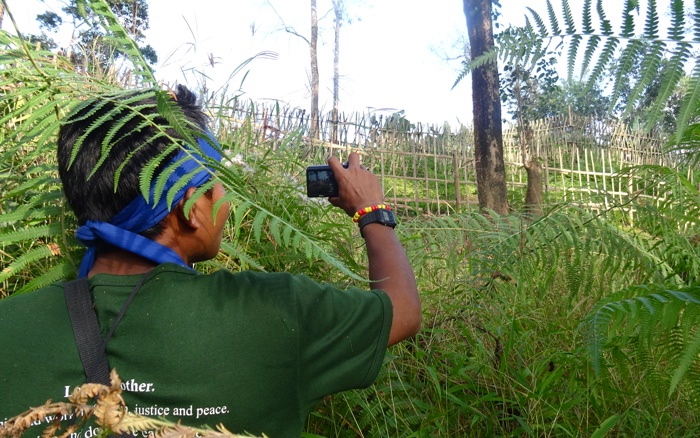
We are thankful for the example and inspiration that we receive year after year from the people here. God does have abundant life for us all regardless of our circumstances and the people here show us that. We are thankful to you all who make it possible for the teams to serve here.
Burma Army Shells and Shoots at Villagers
Multiple Burma Army attacks against villagers and IDPs in the mission area occurred between 2-27 December 2013. 1) Burma Army troops at Baw Khay Ko Camp shelled the Ye Mu Plaw area with 81 mm mortars for seven days, dropping 18 mortars a day on the villagers’ rice fields as they attempted to work in their fields during 2-9 December 2013 2) Burma Army troops at Maw Pu camp fired on FBR relief team taking video of the camp 3) Burma Army shelled villagers near Plako. Three 81 mm mortars were fired on 18 December 2013. 4) Burma Army shot at villagers near Paw Mu Der Village as they attempted to cross the Kyauk Kyi- Hsaw Hta road on 27 December 2013.
Northern and Western Karen State: Mu Traw – Kler Lwe Htu Mission
After the Tha Dah Der program, seven of the thirteen new FBR teams began a mission that included villages in Mu Traw and Kler Lwe Htu Districts. Everywhere they went the teams provided medical care, observed and recorded the activities of the local Burma Army troops – including reconnaissance of Ler Mu Plaw and Kay Pu Camps (in addition to Maw Pu, listed above) – and did Good Life Club programs for the villagers. Overall, 772 patients were treated, including seven dental patients. Twenty-six schools, which collectively teach over 2,000 students, were helped with supplies and money. Sixteen interns from the New Generation School accompanied the teams and helped with all aspects of the mission while simultaneously learning from the Rangers.
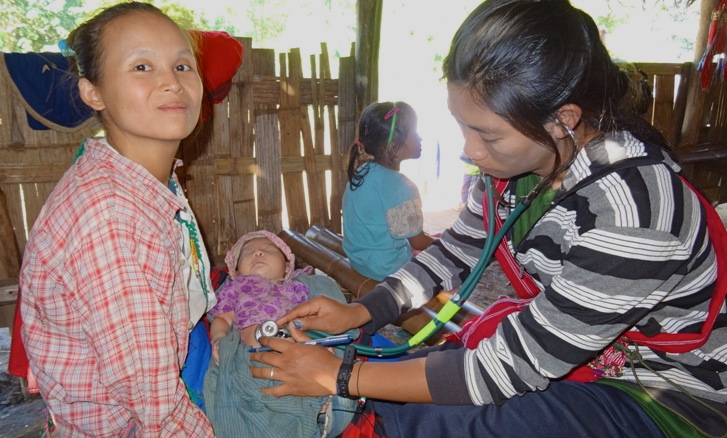
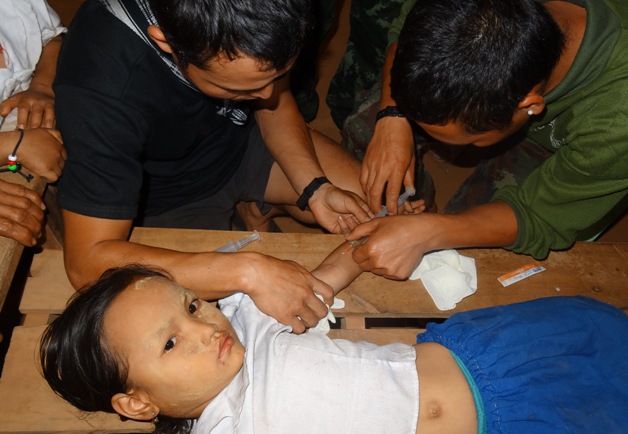
Most of the villages represented at these programs agreed that with ongoing negotiations between the Karen National Union (KNU) and central government, including a ceasefire agreement, things have somewhat improved. This is mainly in regards to traveling; it is now easier to travel as the Burma Army launches fewer patrols and some Burma Army roads are no longer in use, making travel safer. However, the local Burma Army troops shot mortars at villages trying to harvest their fields in this area, eight times in December, as well as shooting at villagers who were trying to cross a Burma Army-controlled road. All escaped unharmed, but some fields cannot be tended and movement in some areas is very dangerous. In the midst of the ceasefires, the Burma Army has been enhancing their camps, as well as building 10 new camps, and the people do not feel secure. The combination of ongoing attacks and some crop failures has created a food problem in the areas the teams visited. Several teachers reported that getting enough food was their biggest challenge.
Education and Health
Education is limited. Out of 26 villages whose head teachers we met with, only four had high schools, with four more having middle schools. Most teachers reported that their village had children who could not afford to go to school at all because they had to help their parents in the fields. The schools’ biggest needs included food, medicine and basic school supplies.
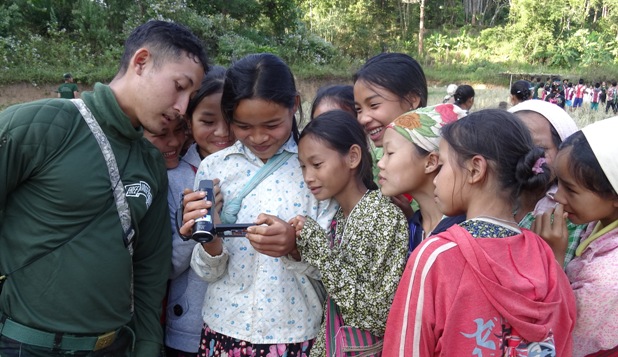
Health is also a problem in these areas. Most of the villages don’t have clinics and must walk several hours to receive medical care. Many of the clinics that are available have very little medicine. Malaria, diarrhea and colds were cited as the main health problems faced in the village.
Good Life Club
The teams put on Good Life Club programs in five different locations that were attended by 26 schools, giving out 5000 t-shirts, as well as other gifts donated by friends from around the world. Team members from seven different ethnic groups in Burma taught the children in each village a few phrases in their respective languages, played and sang with them, and laid groundwork for future unity between ethnic groups that rarely see each other. The teams performed two dramas during the day, one based on the Bible story of Shadrach, Meshach and Abednego; and the other as part of the health teaching, on sanitation and avoiding worms.
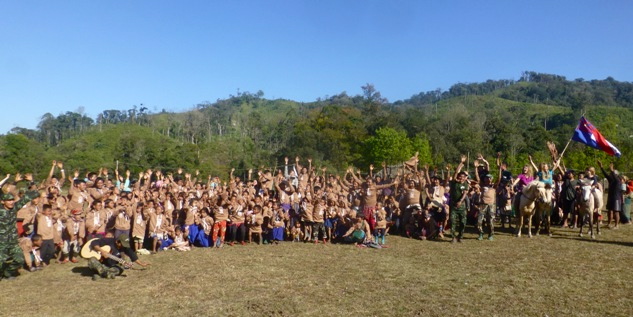
Mapping Project
FBR teams also began a property mapping project to help delineate and formalize the borders of Karen-owned land. One section of paddy fields that have been unused over the years because of Burma Army activity was mapped out, with map and GPS coordinates of its borders marked out and agreed on by the local leaders. This is a pilot project that the teams have just begun to train in – and plan to do more of in the future in conjunction with local mapping efforts.
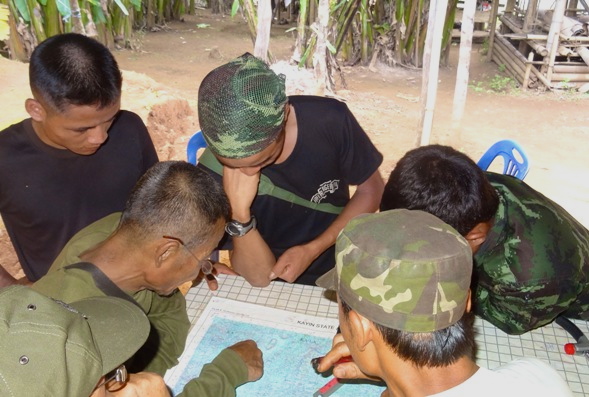
Western Karen State: Kler Lwe Htu – Ler Doh Mission
(written by the Karen team leader, Koala Bear, who led this part of the mission)The remaining six of the new teams were led by the Kler Lwe Htu FBR leader, Koala Bear, to Ler Doh Township. The people visited on this mission were forcibly relocated in 2006 and have just now begun to move back to their original villages. 15 percent of the people are farmers, 30 percent survive by gardening (betelnut, durians) and the rest are day laborers. Since the ceasefire, the people have more right to work and travel, but are facing food and health problems still.
Good Life Club
The teams did two programs, at Kywe Ja and Sa Le villages. In Kywe Ja the teams gathered three villages’ children and in the Sa Le Village program, children from three villages came as well, with a total of 246 children. They gave 48 children’s packs and 1280 GLC T-shirts to the children and parents.
Education
In Kywe Ja, three villages have two schools with 12 teachers and 181 students. In Sa Le, three villages came but there was only one school, with 10 teachers and 143 students. Both places had nursery schools. All the school teachers are from the Burmese Government and get a salary from them; the school head master/mistress salary is 105,000 kyat per month (about US $100). The schools are going well but there are some children who cannot go to school.
Health
In both places there are few health workers, with just one Community Health Worker (CHW) in each place visited. Both of them have done the CHW training in Karen State. The teams treated over 513 people with several diseases such as common cold, joint pain, hypertension, anemia, eye disease, malaria, beri-beri, worms, fungal, and others. The teams also gave 100 eye-glasses and helped six dental patients. During our mission the teams provided a two-day medical training and explained about diarrhea, dysentery and pneumonia, with 12 people from each site attending these trainings.
Human Rights Violations
Construction of a car road will destroy some villagers’ water paddy farms as the road is made wider by about 100 feet. 40-50 houses will have to move and some trees belonging to the people were cut down. This is happening between Ler Doh and Payalaygone.
Burma Army activities
Two Burma Army camps occupied by Infantry Battalion (IB) 60 are in this area. The main camp is Tha Bo Camp. There were no attacks in this mission area but some army trucks went up and down between Muthe and Tha Bo, and the Kyauk Kyi town troops rotated in and out. During our program at Sa Le, Light Infantry Battalion (LIB) 351 sent their soldiers to come to the KNU place at Payalaygone. The leader said that they came for practical training. This troop size was about 31 soldiers and the teams saw that they had four 60mm mortars, one 81mm, one RPG, three K3-79, and two K3 light machine gun and the rest were K3 rifles.
Summary of Western Karen State Mission
During our mission we visited over 1300 people from six villages and the teams treated 513 patients. Two GLC programs were done during the mission and we distributed 1280 GLC T-shirts and 48 school packages. We thank God that we completed our mission; the people were very pleased to see us and enjoyed our program very much. However, we have learned that many people are still afraid and the people still face food shortages and health problems.
Northern and Western Karen State Missions Complete
At the completion of both missions all the newly-trained teams reunited, shared their experiences, resupplied and made plans for follow-up missions. They are now going to their own areas to continue relief missions.
Thank you and May God bless you,
Free Burma Rangers
